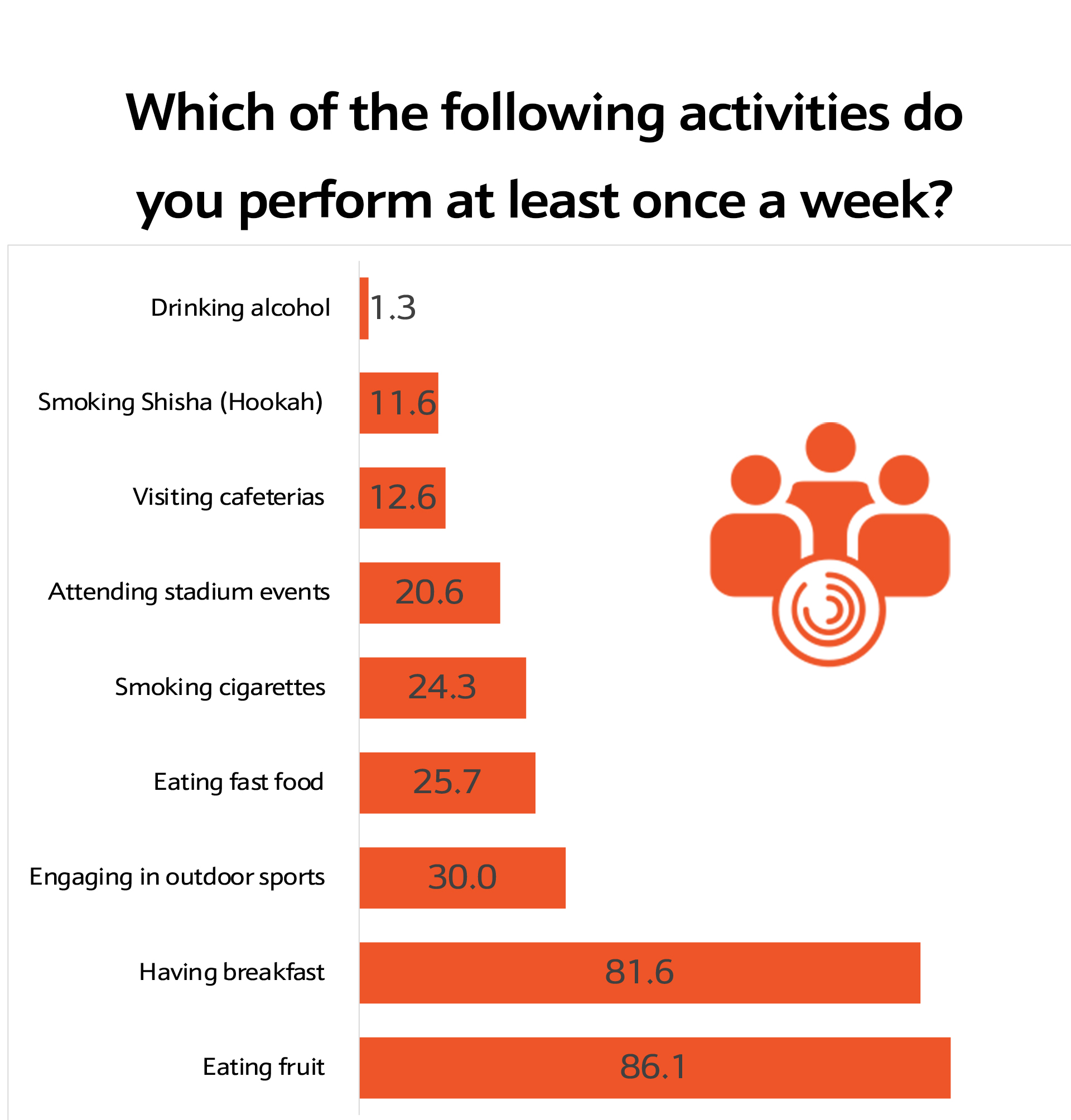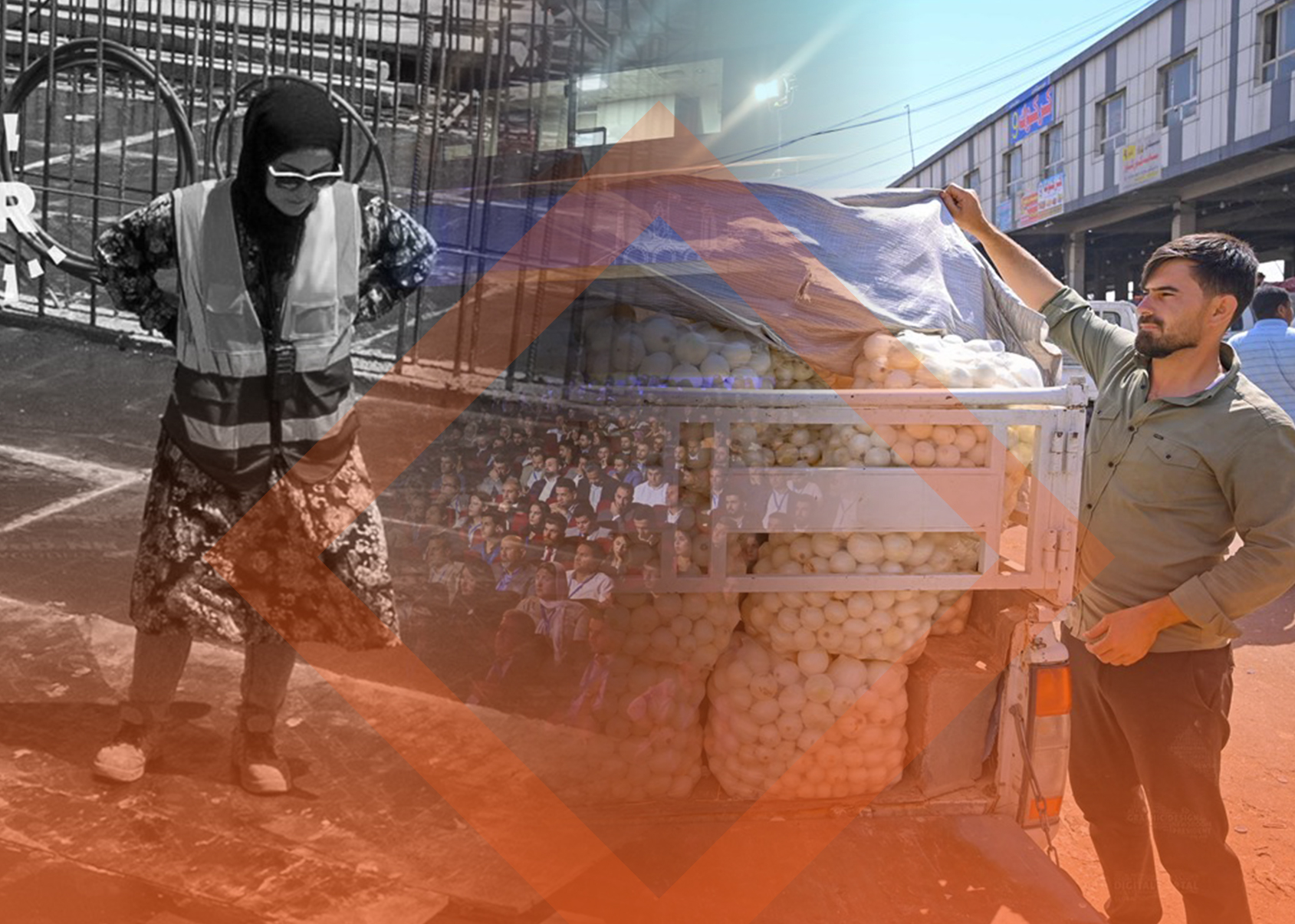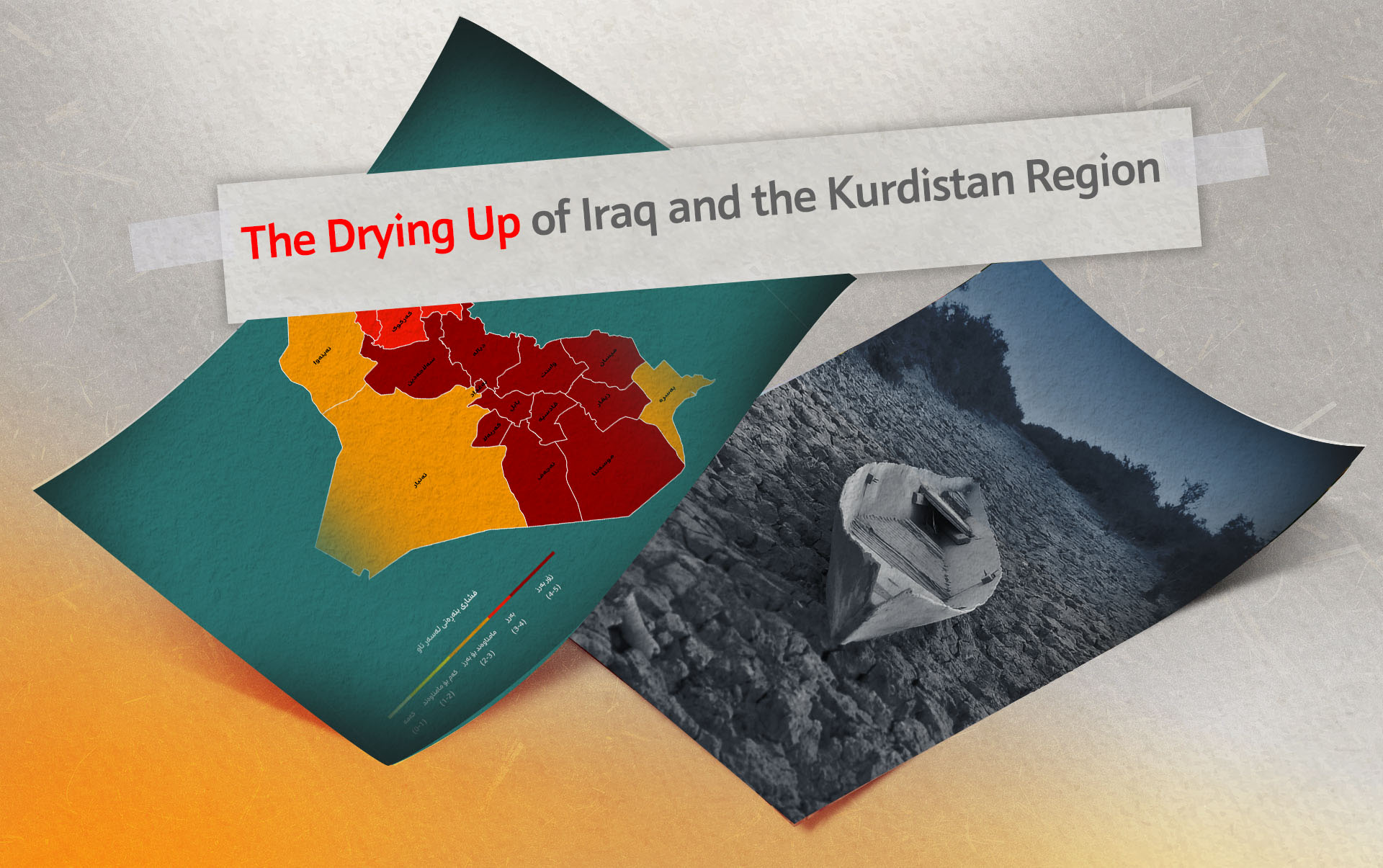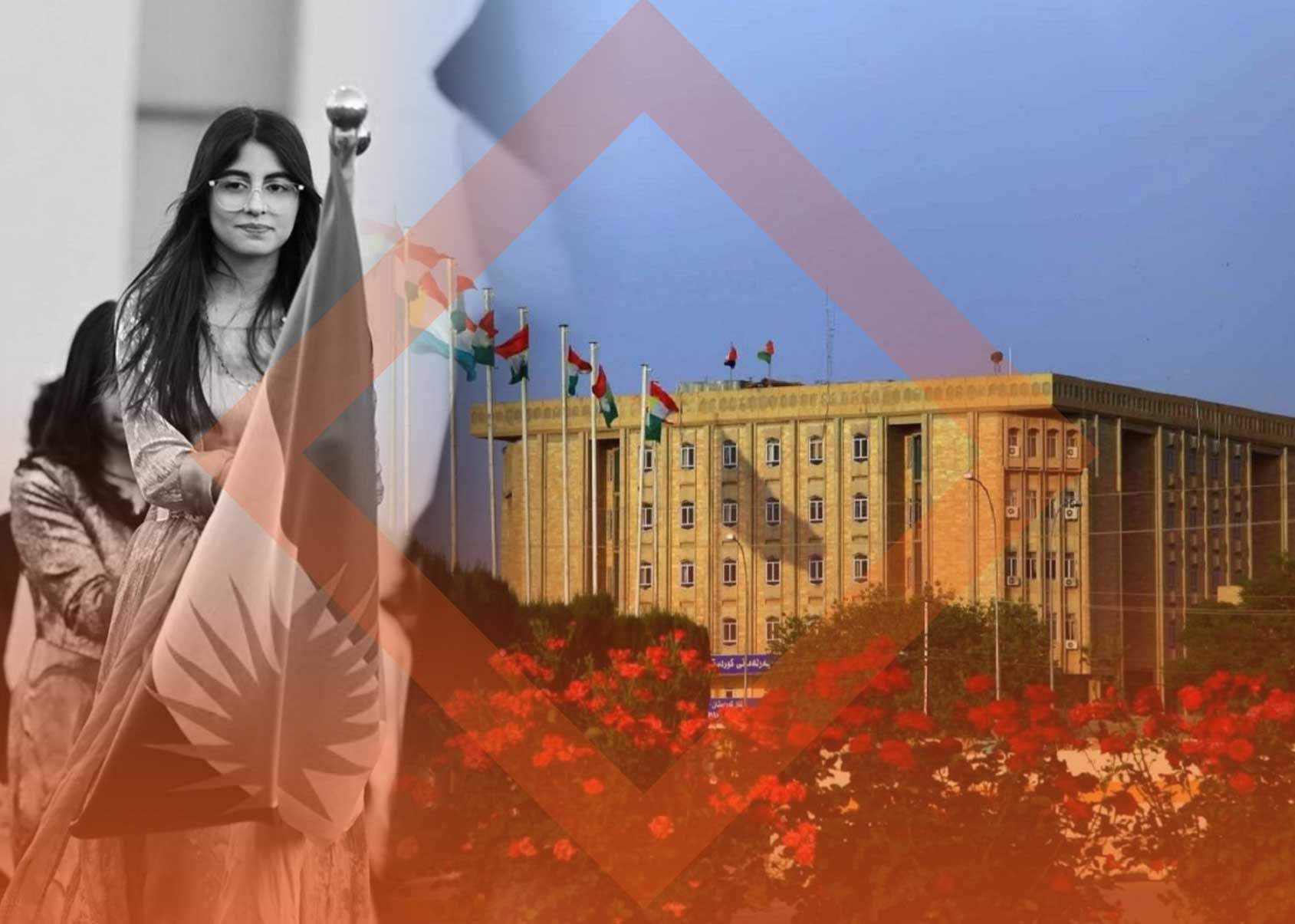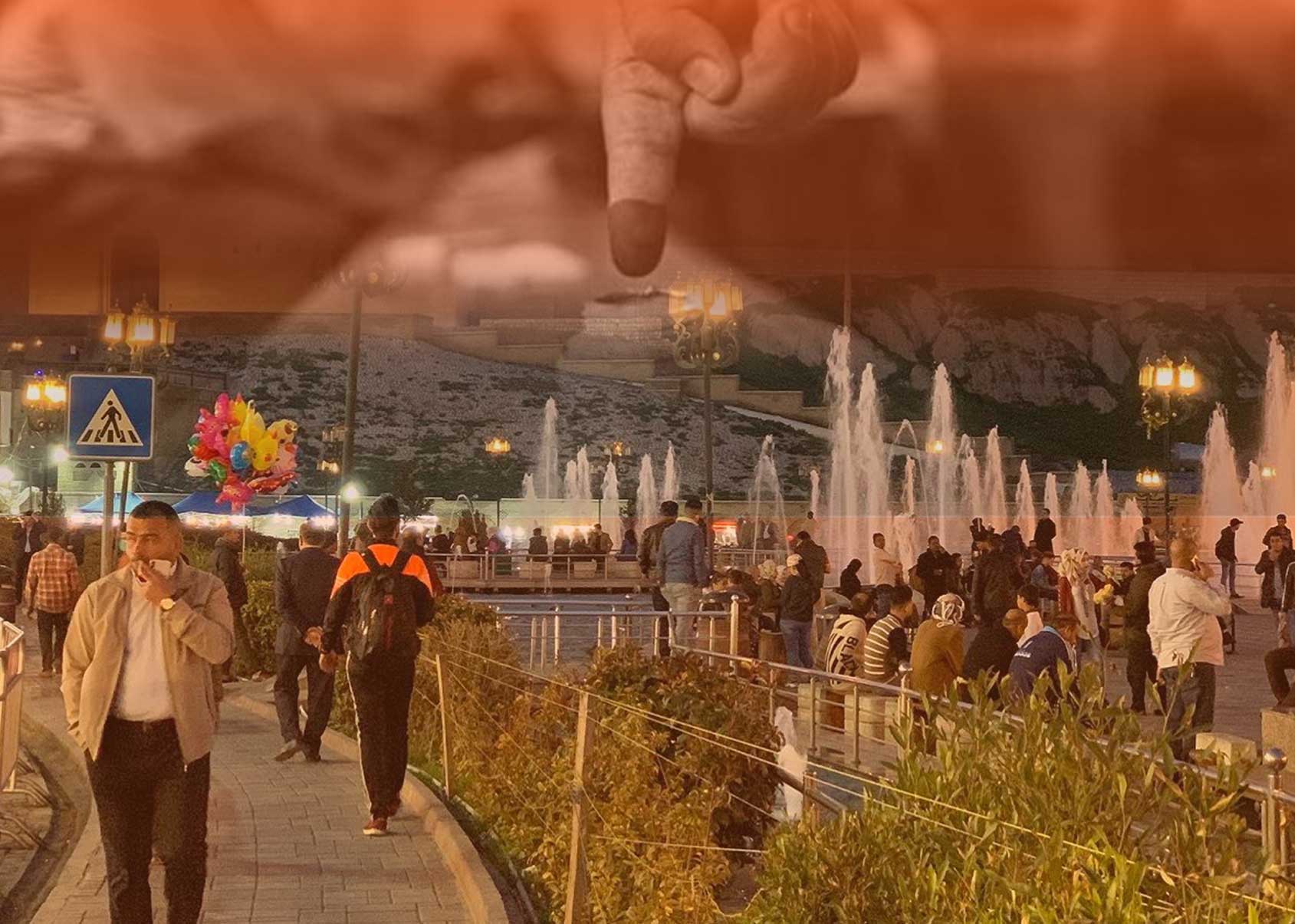
The Rudaw Research Center publishes the first part of the result of the "Youth Perspective in the Kurdistan Region - 2023" which focuses on Youth and employment, and will publish other parts of the survey and final report of the survey in the coming days.
Please click here to download as PDF files,
Economic Factors
Career situation, challenges and opportunities
According to the Survey findings, 43.9% of young people in the Kurdistan Region are employed, 26.6% are students, and 15.7% are housewives. The unemployment rate among young individuals is 13.6%, while it is 0.2% among the disabled and ill. There is a significant gender gap in employment, with 61.5% of males and only 16.1% of females working. The unemployment rate among females is 13.5%. Soran has the highest rate of employed youth (51.7%), followed by Zakho (50%) and Raperin (47%). Erbil has a high percentage of employed youth (46.8%), followed by Sulaymaniyah (42.2%) and Duhok (41%). Halabja has the lowest employment rate, followed by Garmian. Garmian has the highest rate of youth unemployment at 29.6%, followed by Duhok at 21.8%, Raparin, and Zakho at 16.7%.

In the Kurdistan Region, 71.3% of employed young people work for private companies, while only 28.7% work for the government. When asked about future career prospects, 76% of young people believe that the private sector offers better opportunities, while only 24% are optimistic about employment in the public sector. Duhok, Zakho, Garmian, and Halabja have the highest rates of youth employment in the private sector. Raparin and Soran have the smallest populations. In terms of government employment, Raparin, Soran, and Sulaymaniyah have the highest percentages. The private sector is seen as a more favorable environment compared to the public sector. The gender disparity in employment is less pronounced in the private sector, with 51.4% of employment opportunities for females and 48.6% for males. Regarding education, the private sector employment rate is above 65% across all three educational categories.
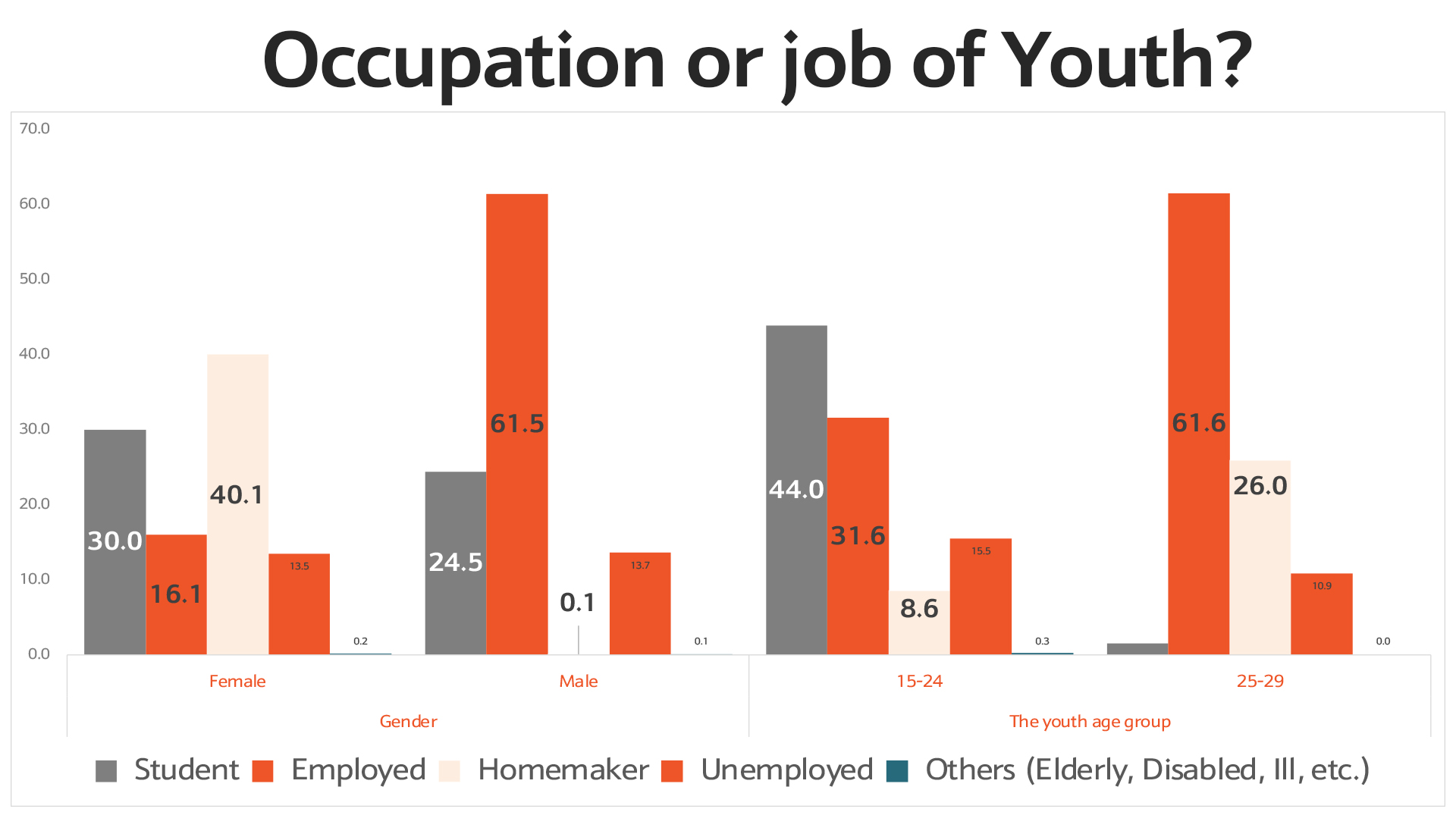
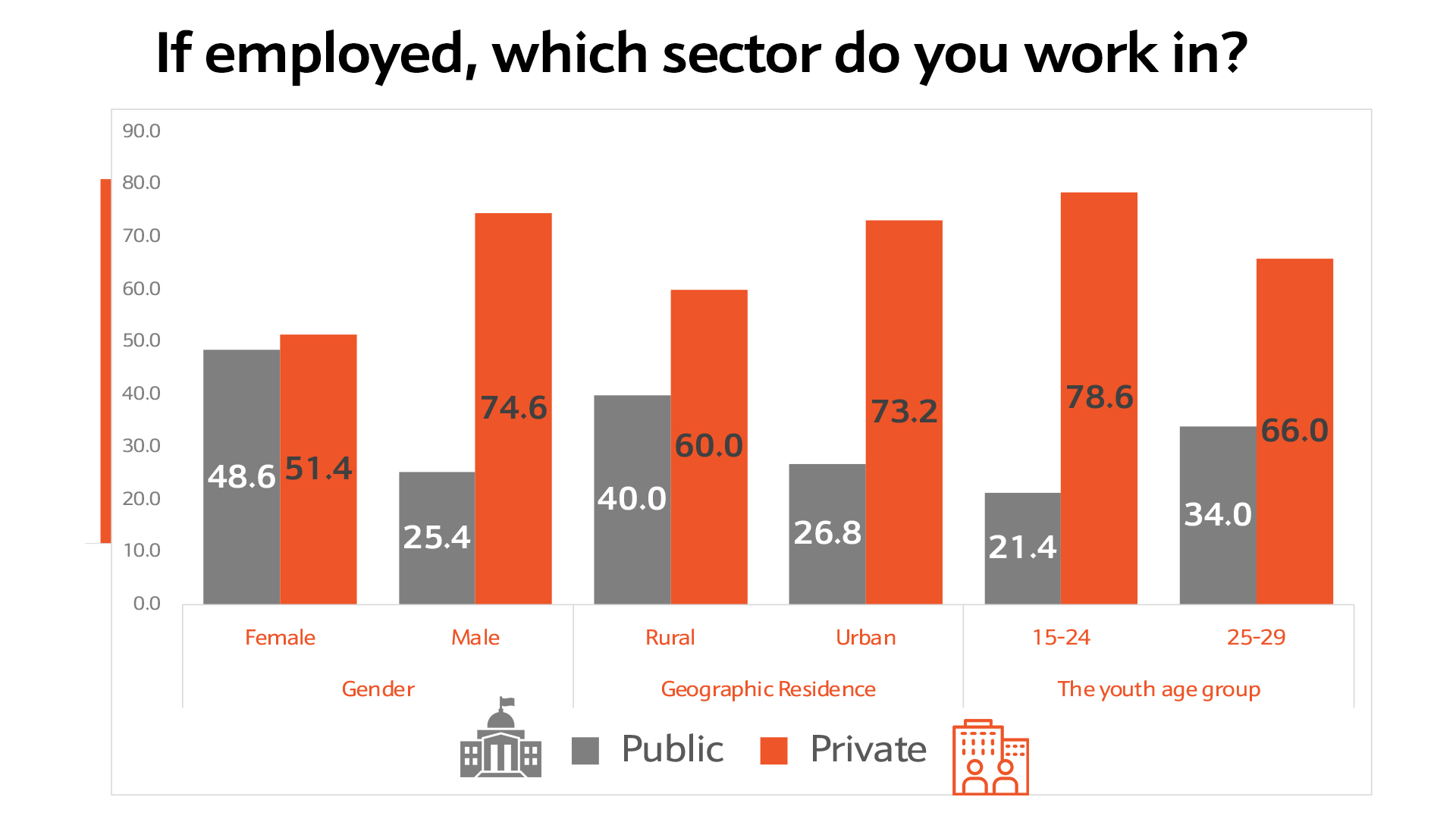
At the Kurdistan Regional Government level, 36% of those employed have been working for less than 5 years, while 39.8% have been working for 5-9 years, and 24.2% have been working for over 10 years. Among those who are employed, 66% belong to the 25-29 age groups, and 32% have been working for over 10 years. This indicates that individuals who are 25 years old started working at the age of 15, while those who are 29 years old entered the labor market at 19 years old. The highest percentage of individuals working for over 10 years was recorded in Erbil, Halabja, Zakho, and Sulaymaniyah. Surprisingly, 13.3% of those in the 15-24 age group reported working for over 10 years, suggesting the presence of child labor in the Kurdistan Region. Additionally, 15.1% of high school graduates reported working for over 10 years, indicating that some individuals are balancing education and career.
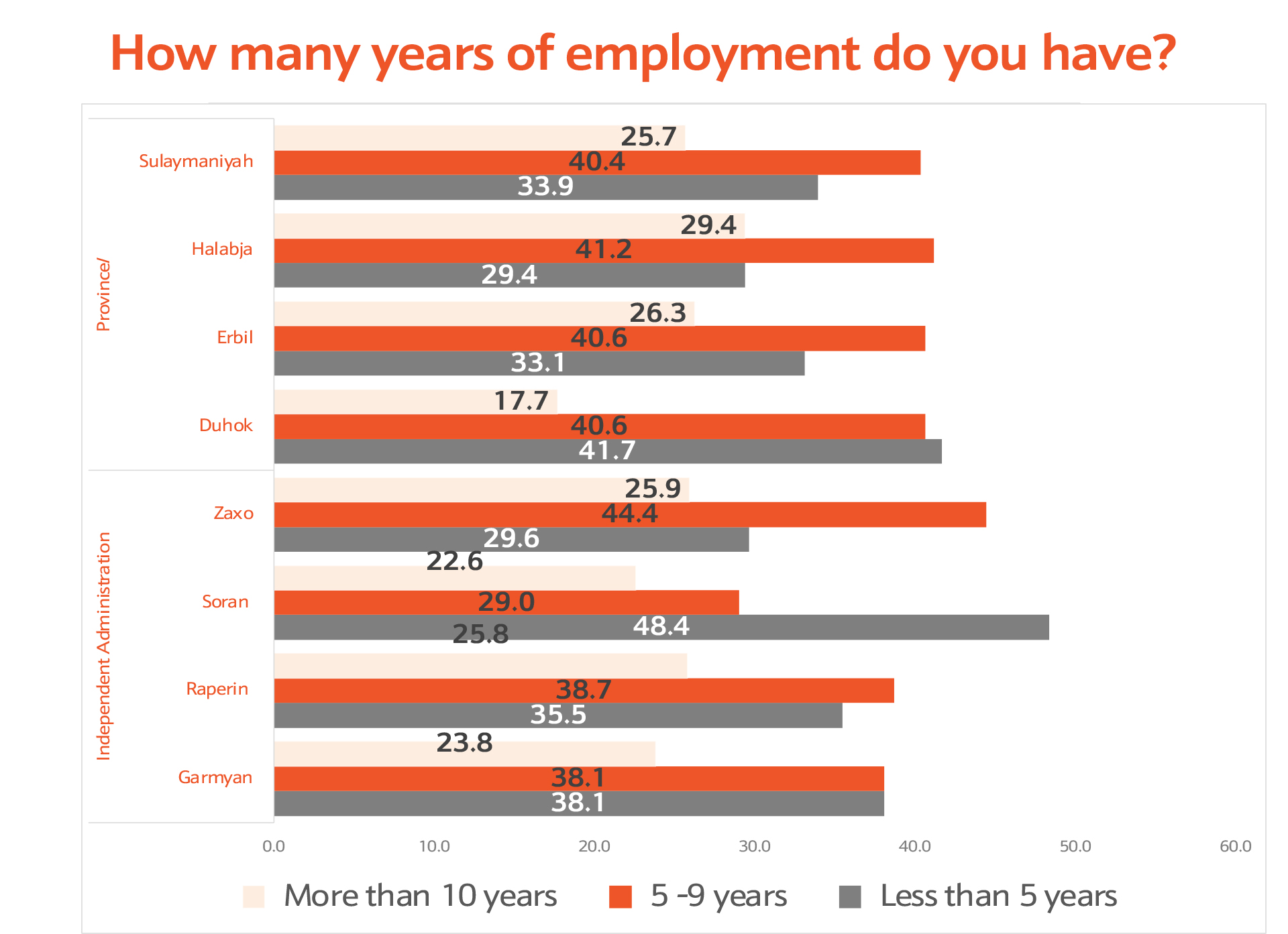
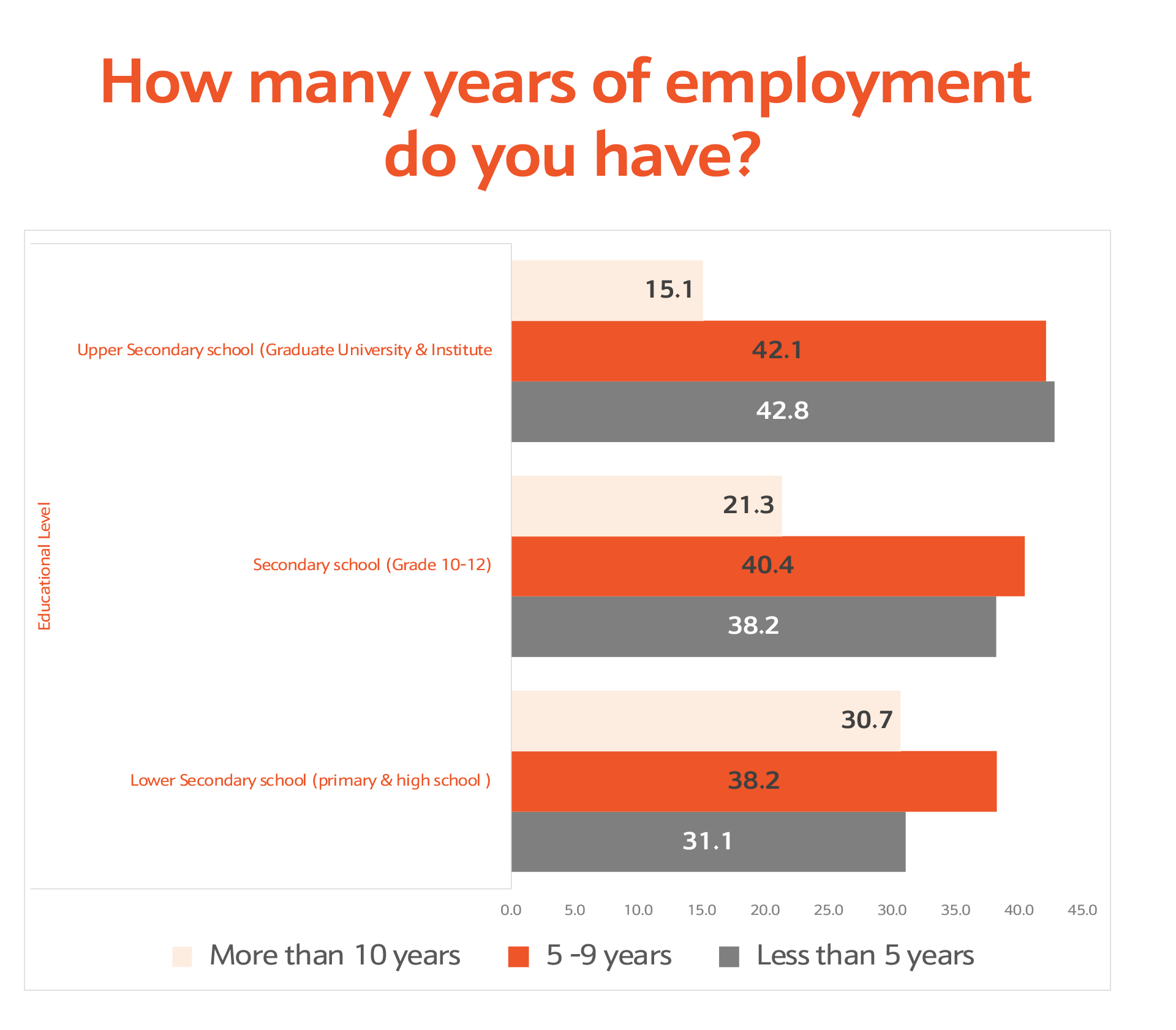
At the Kurdistan Regional Government level, 55% of young people reported not changing their occupations, while 45% indicated that they had changed occupations. This suggests a balanced mix of employment stability and turnover. Erbil, Sulaymaniyah, and Soran have the highest rates of employment turnover, while Halabja and Garmian have the lowest. In the independent administrations, employment retention and continuity rates are generally higher. Despite gender, age, location, and education differences, the percentage of respondents considering a change in occupation is similar to those who expressed dissatisfaction with their current positions.

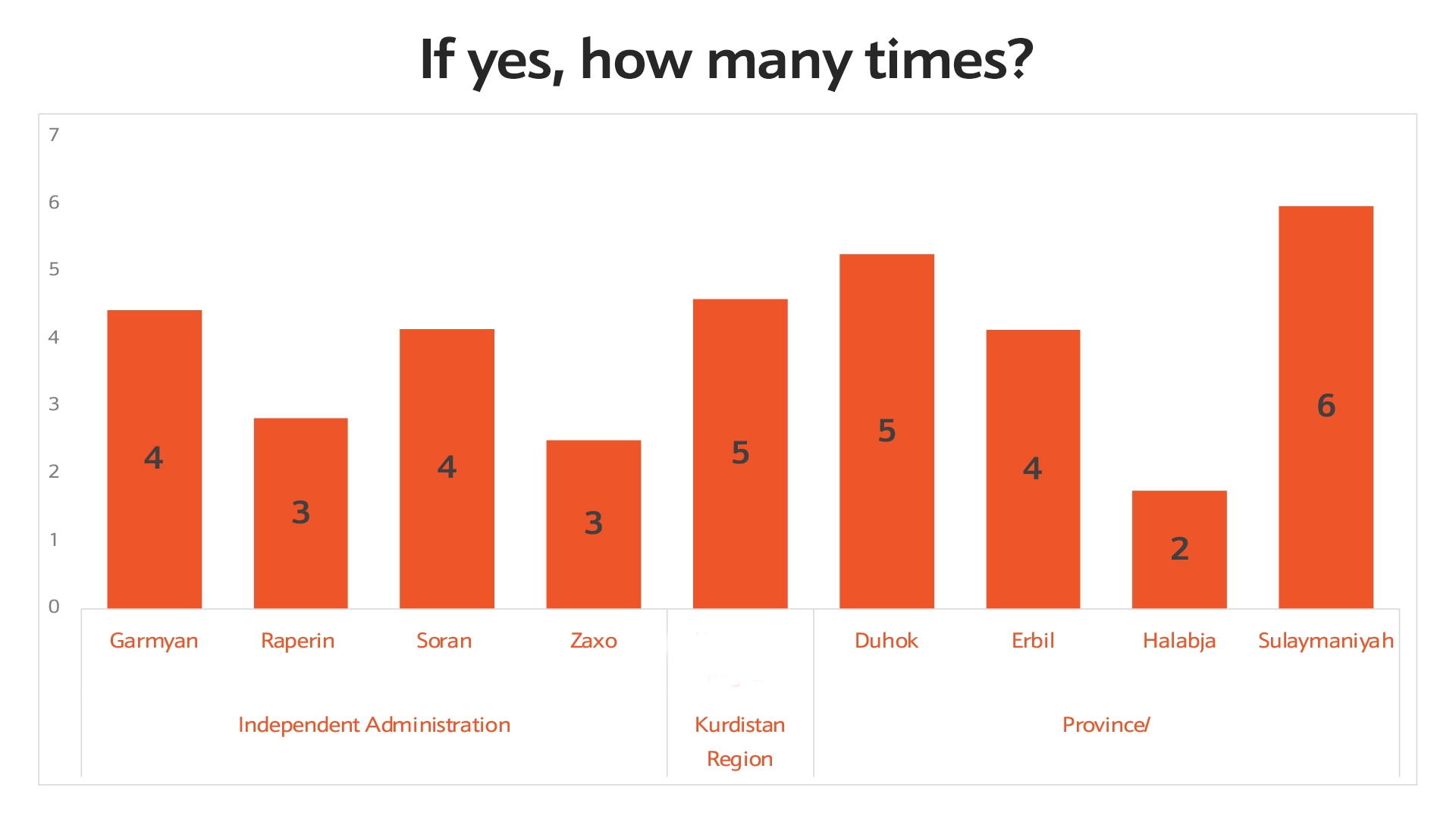
On average, each young person at the Kurdistan Regional Government level has changed jobs approximately 4.6 times. Sulaymaniyah has the highest job change rate at 6 times, followed by Duhok at 5 times, and Halabja at 1.8 times. There is a notable difference between males and females, with males experiencing more job changes (around 5 times) compared to females (around 2 times). Individuals with a high school education or below also change jobs about once, but as the education level increases, the number of job changes decreases to approximately twice that rate, remaining at around three times.
Another perspective on the labor market and the economy from young people is that 73.5% find it difficult to secure a job in the Kurdistan Region. This viewpoint is particularly prevalent in Halabja, Raparin, Sulaymaniyah, and Duhok. Job availability is more challenging for women (81.4%) compared to men (72.2%). However, 26.5% of young people in the Kurdistan Region hold a contrary opinion. The difficulty of finding work is a recurring topic for both urban and rural populations and across different age groups, with almost identical rates.
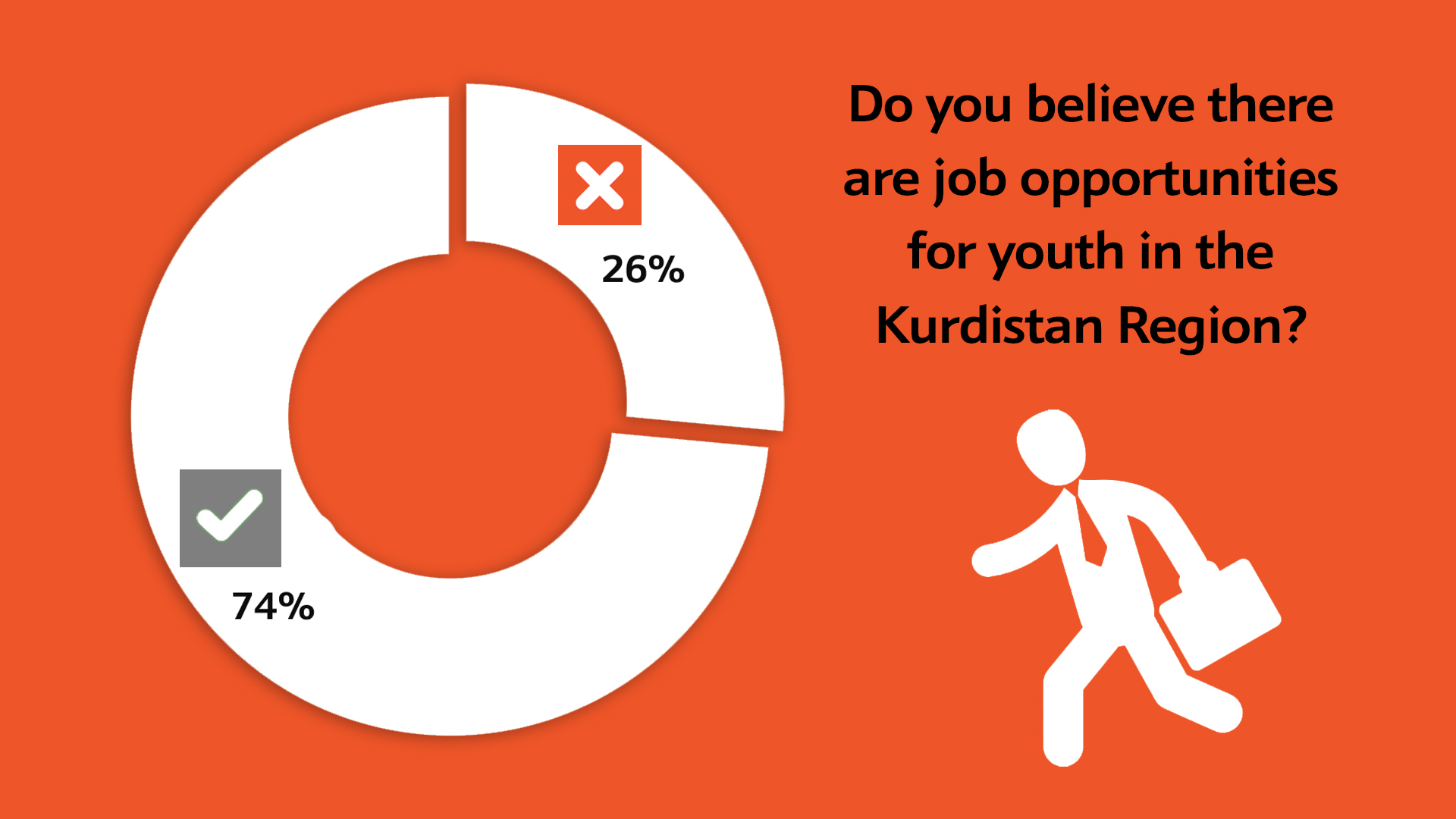
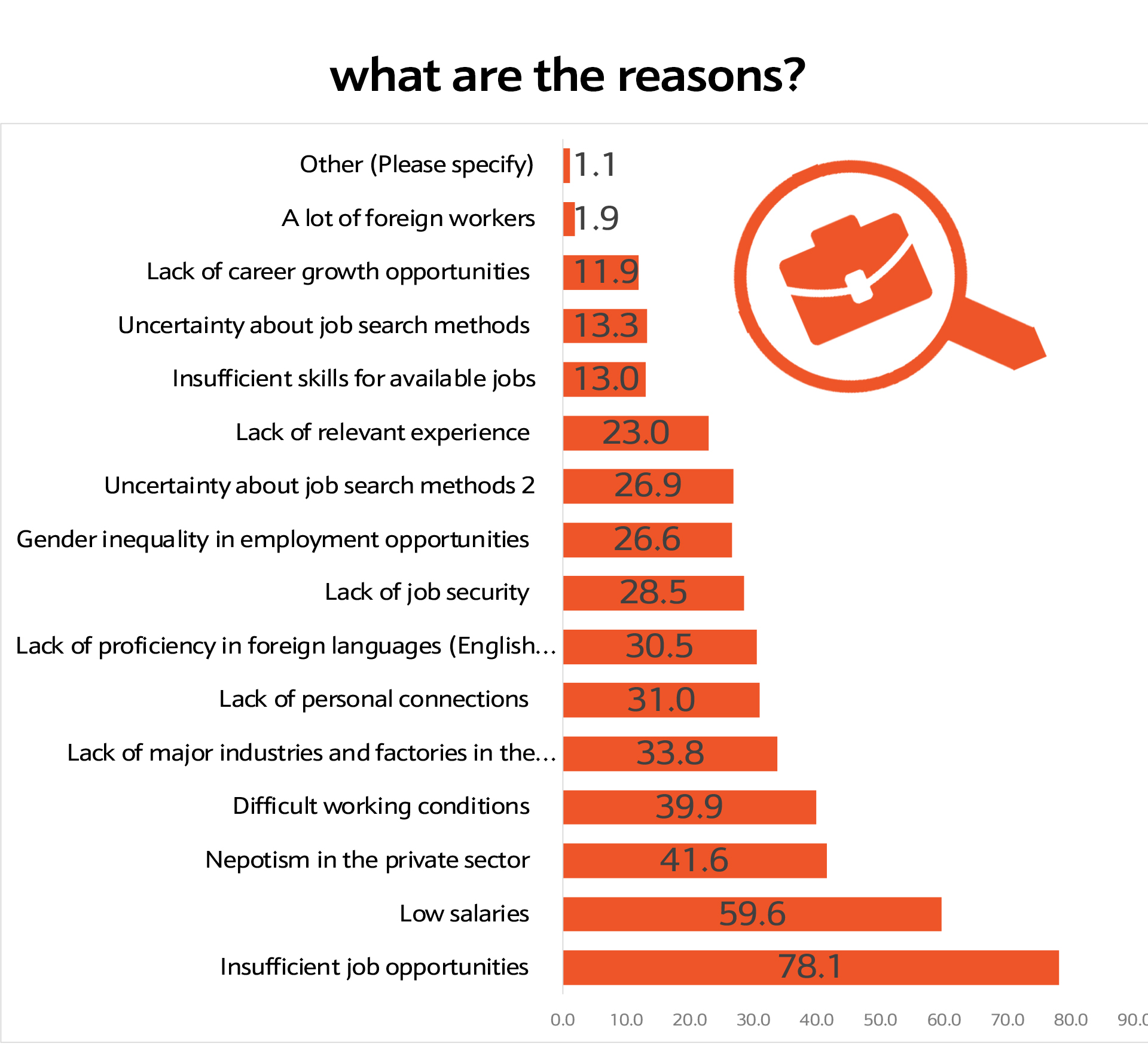
Young people identify the scarcity of employment opportunities as the primary reason for the difficulty in finding a job, with 78.1% selecting this as their top concern out of sixteen possible reasons. However, when asked about the availability of job opportunities, 53% of young people responded negatively, while 47% disagreed. Despite these disparities, it is evident that the lack of employment opportunities is a significant concern among young people. Other factors contributing to the job search challenge include low wages (59.6%), nepotism and monopolies in the private sector (41.6%), lack of networking in the workplace (31%), and racial discrimination (26.6%). 33.8% of respondents cited the absence of manufacturers and industries. Inequality of opportunities and a lack of economic and industrial capacity in the country are the primary reasons why young people find it difficult to secure a job.
Secondly, the contribution of the labor skill possibilities. 39.9% of respondents noted challenging working circumstances, 30.5% mentioned language barriers, and 23% mentioned a lack of experience. 11.9% of respondents indicated the positions were unsuitable for them, while 13.3% cited a lack of contemporary skills. 13% of respondents said they had no idea how to seek for job. According to the report, the second largest barrier to employment in the Kurdistan Region is a lack of labor skills.
According to the Kurdistan Regional Government, 69.3% of young people believe that the largest economic issue affecting young people is a lack of government occupations. The young people may be pursuing a stable source of income, which they do not seem to have found in the private sector. Finding employment was cited by 62.6% of young people as their top economic difficulty, followed by a lack of finance to start a small business or start-up and a lack of equitable chances in the private sector by 28%. However, 21.1% said that the main issue directly affecting young people's preparation for the job market was a lack of fresh and required skills. On the other hand, 21.1% of respondents identified a lack of required and new skills as the most significant obstacle directly affecting the education of young people in the job market.

Income, Livelihood and Financial Status of Youth
At the Kurdistan Region level, young people in the region have an average monthly expenditure of 236,000 ID (Iraqi Dinar). Zakho has the highest average monthly expenditures at 310,000 ID, likely due to its proximity to the border and active commercial sector. Erbil follows with an average of 261,000 ID. Garmian has the lowest average expenditure at 176,000 ID, and Raperin records 197,000 ID. The lowest monthly pension in the Kurdistan Region is 300,000 ID, while part-time government teachers earn salaries ranging from 200,000 to 400,000 ID per month. The median monthly salary of government employees in Iraq in 2022 is expected to be $583 after taxes, ranking 62nd out of 105 countries and 10th among Arab countries, according to CEOWORLD magazine.
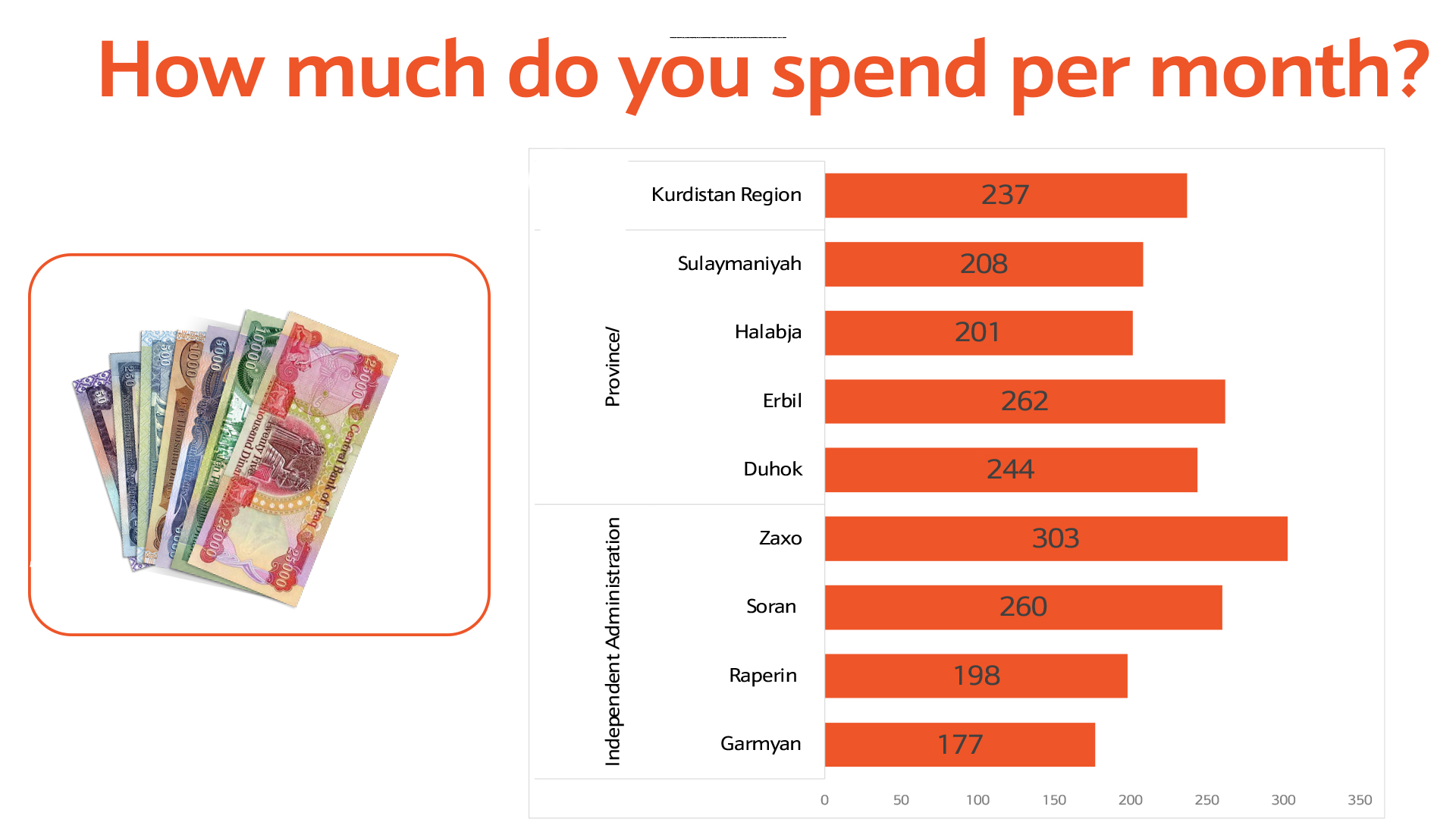
There are variations in monthly expenditures among young people based on gender, education level, and age group. Males spend an average of 264,000 ID, while females spend 193,000 ID. The age group of 25-29 spends twice as much as the age group of 15-24. However, there is not a significant difference in spending between urban and rural youth. Rural youth spend around 200,000 ID, while urban youth spend approximately 246,000 ID, indicating similar livelihoods in both environments. Sleeping is the most common activity among young people in the Kurdistan Region, accounting for 57.8% of their weekly activities, followed by going to the market. Garmian has the highest percentage of sleeping as a primary activity during the week, reaching 83%, despite having the lowest monthly spending. The main sources of income for young people are primarily from their families, with 52% receiving money from their families and 42% being self-employed.
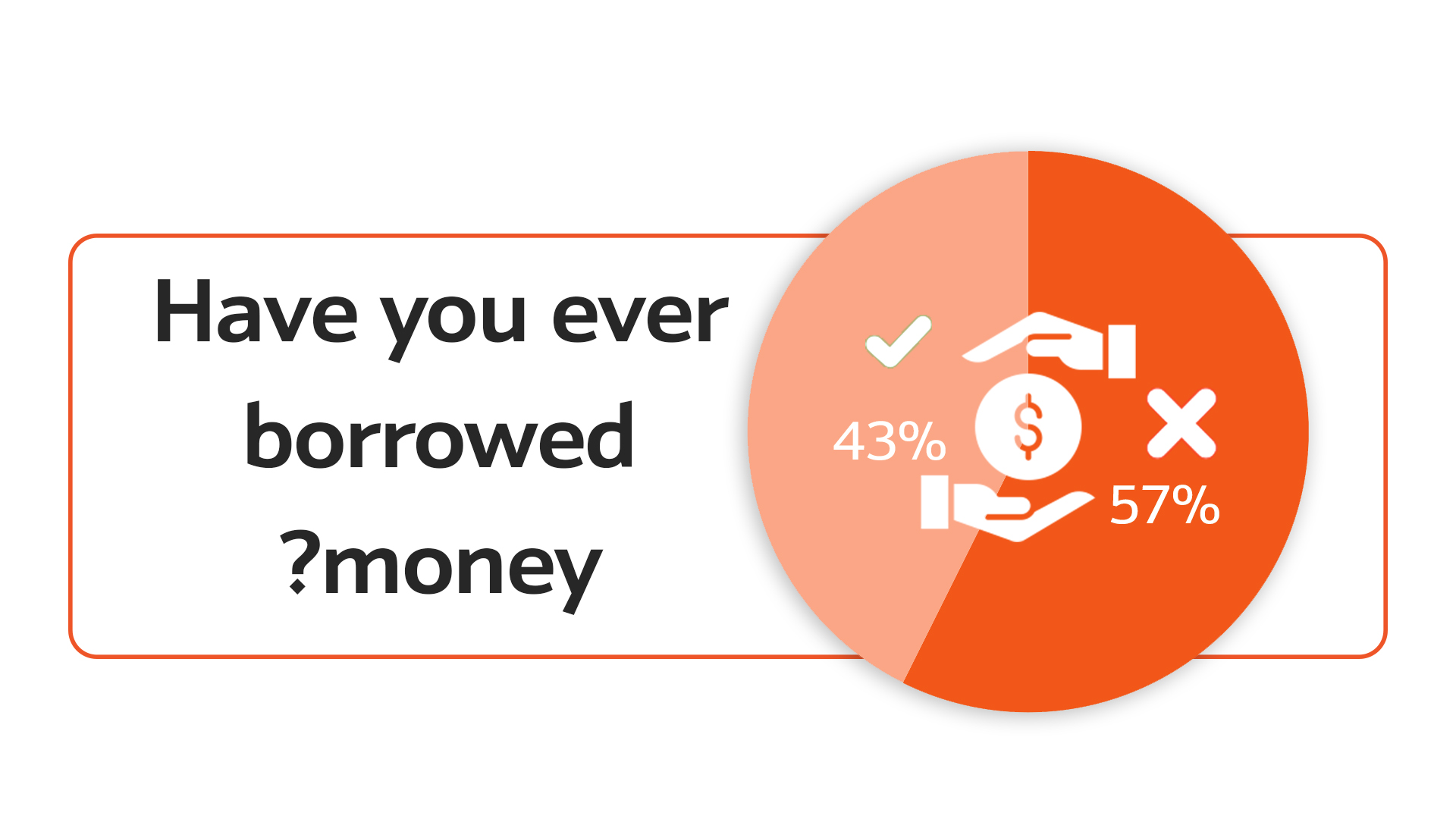
Although 57.4% of young people in the Kurdistan Region stated that they do not borrow money, 42.6% mentioned borrowing to cover daily expenses. It is interesting to note the distinction between spending and borrowing among young people. For example, while Garmian has the lowest monthly spending, Halabja has the highest percentage of young people who borrow money (72.2%), despite having the lowest percentage of young people employed. This may be linked to the fact that family support constitutes a significant portion of youth spending. The health of young people in the Kurdistan Region appears to require more attention. At the Kurdistan Region or among youth, 41.4% of respondents visit a doctor every few years, while 58.6% visit a doctor at various intervals within a year. Among them, 16.6% visit monthly, 12.3% every three months, 19.3% every six months, and 10.4% once a year.
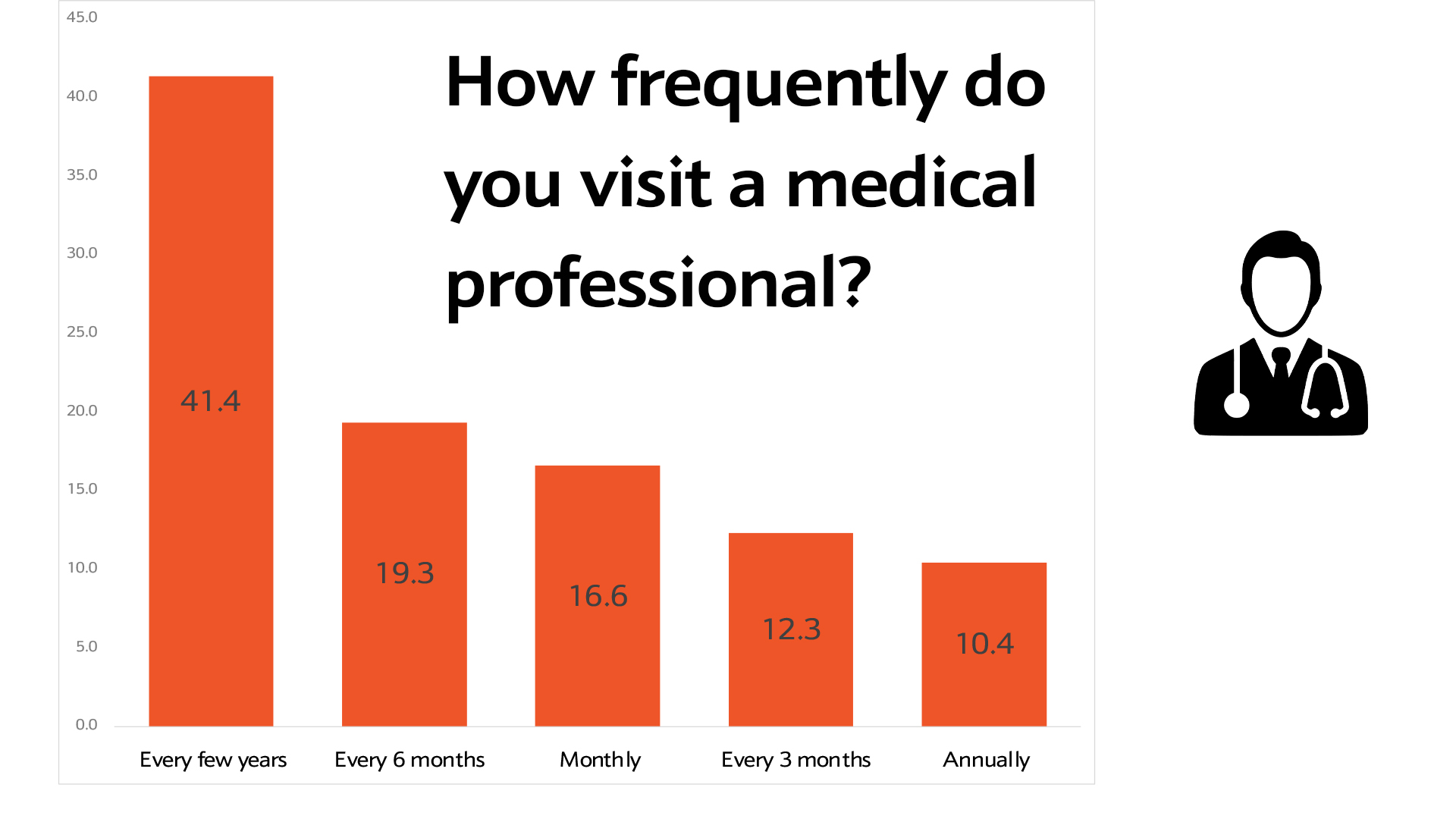
Although youth in the Kurdistan region are conscious of their nutrition and include fruits and breakfast in their diet, only 30% indicated engaging in outdoor exercise. The percentage of individuals who smoke or consume fast food is higher than those who participate or contribute in sports. Alcohol consumption among young people is generally low, but smoking and visiting cafeterias are common activities during the week. Halabja has the highest proportion of people engaging in physical activity at the stadium (33.3%), followed by Sulaymaniyah (27.9%), Erbil (18.7%), and Duhok (11.1%). Conversely, the rate of doctor visits is 13% in Halabja, 15% in Sulaymaniyah, 10% in Erbil, and 27.4% in Duhok.
